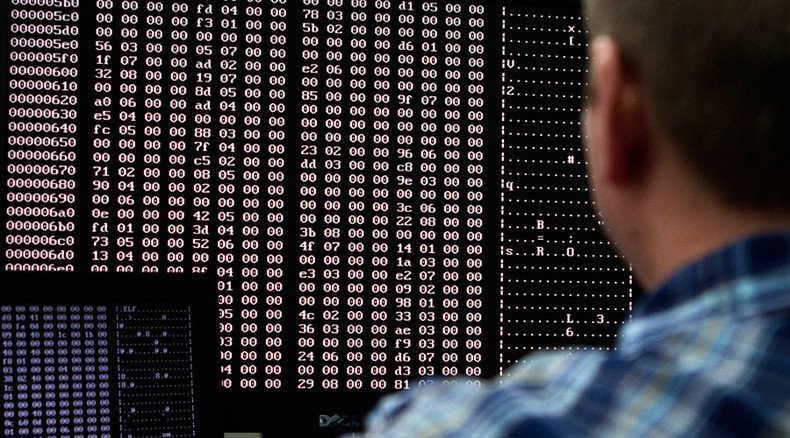Pentagon pushes for cyber weapons capable of real-world killing

Cyberwarfare may cross over into the real world to harm humans, thanks to an upcoming military contract valued at almost half a billion dollars.
Raytheon, Northrop Grumman and Lockheed Martin are some of the defense firms competing for an upcoming $460 million US Cyber Command project to give the American military the power to turn an enemy’s critical infrastructure against them with weaponized code, according to Defense One. A 114-page draft of a 5-year contract released on September 30 details a plan to get private companies to support military operations with cyberwarfare.
The initial work order will support “cyber joint munitions effectiveness” by developing and deploying “cyber weapons” and coordinating with “tool developers” in the spy community, the documents state.
READ MORE: Germany prepares for cyberwarfare offensive – reports
Some of the more direct cyber espionage activities include starting “cyber fires” in enemy hardware. This separates this new kind of cyberwarfare from traditional electronic attacks – even the infamous, centrifuge-destroying Stuxnet – in that it can actual be a threat to human life, according to the document.
The draft even lays out contract requirements for a Weapons & Capabilities lead position, including a “minimum of three years of experience in Cyber Fires and/or Cyber Targeting.”
But this kind of offensive cyberwarfare isn’t esoteric stuff relegated to one strange corner of the US military. In fact, digital arms designed to kill are now explicitly sanctioned under the Pentagon’s newly-published Law of War manual, with an entire chapter devoted to cyber warfare.
Cyber strikes are allowed even if “it is certain that civilians would be killed or injured — so long as the reasonably anticipated collateral damage isn’t excessive in relation to what you expect to gain militarily,” said retired Major General Charles J. Dunlap, executive director of Duke University’s Center on Law, Ethics and National Security. “These are essentially the same rules as for attacks employing traditional bombs or bullets.”
The ability to turn infrastructure into smoldering death traps is part of a greater campaign to beef up the United States’ cyber muscle, which was shown to be woefully inadequate by high-profile attacks such as the Office of Personnel management hacks.
READ MORE: Second OPM hack puts 21.5 million people at risk
US Cyber Command, which was only created in 2009, is in the process of recruiting 6,200 specialists for cyberwarfare teams positioned all around the world. The command’s duty is to prevent foreign hackers from executing attacks on domestic targets, to aid combat troops overseas, and to protect the military’s own networks. By comparison, China is believed to have 100,000 cyber warriors, according to Defense One.












